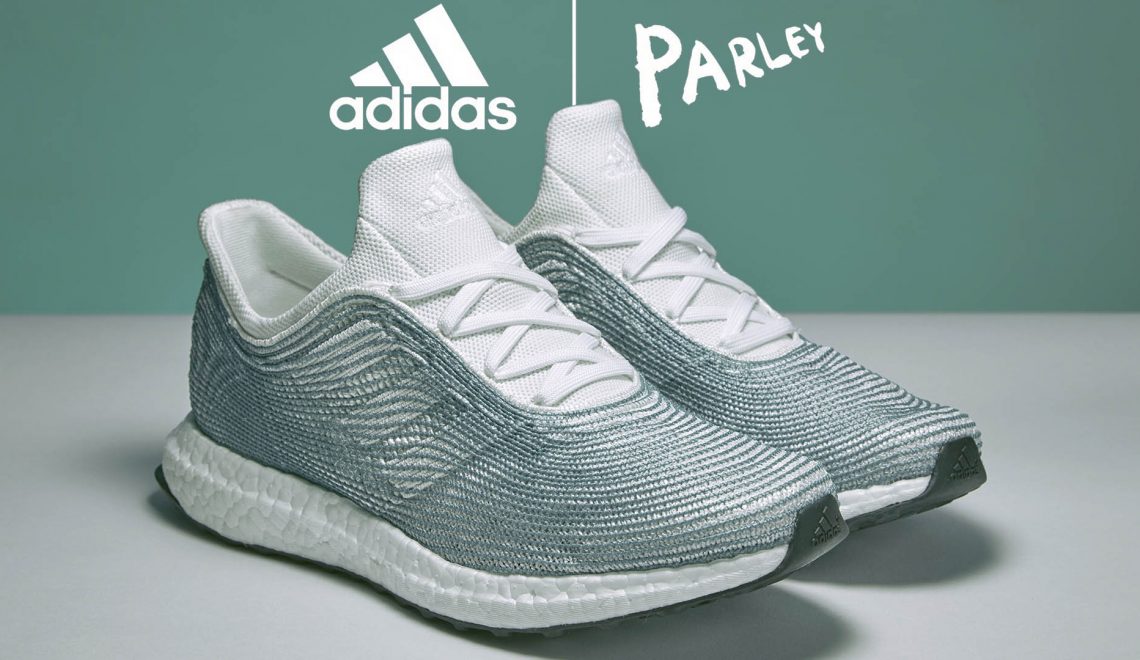Adidas has been eying the use of 3D printing technology in its sneakers for some time. Last Fall the footwear maker debuted a 3D printed concept shoe called Futurecraft 3D. The midsole was printed using a latticework technique that allowed the shoe to be firm when standing and cushiony when running. Furthermore, the midsole could be customized for your foot shape, pressure points, and impact pattern. Over a year later, Adidas is finally bringing to market its first 3D printed shoe. While Adidas hasn’t yet reached the customizable future it envisioned, the shoe is still exciting and marks an important first step for the company towards the future of footwear manufacturing. The new shoes, called 3D Runner, are available in a stunning, completely matte black design. The upper is crafted using the company’s 3D knitted Primeknit technology (also used on Ultra Boosts and Yeezys) while the midsole is completely 3D printed. The shoes look amazing, but don’t count on getting your hands on a pair.
 While they are not cheap, $333, that unfortunately is not the issue keeping you from buying a pair. The 3D Runner will only be available in very limited quantities and only sold in 3 cities. You have to be in New York, Tokyo, or London to have a chance at owning a pair. Thankfully you can save yourself from waiting in line in the cold by reserving a pair via the Adidas Confirmed app (iOS, Android). New York has already sold out but if you are in Tokyo or London, the shoes will be made available tomorrow, Dec 15th. While the 3D Runners are expensive, the price could have been twice as much and they still would have sold out. The $333 price point is notable though because it is less expensive than New Balance’s 3D printed Zante Generate, which was priced at $400 when they were released in April. If prices continue to drop at that rate, we can expect 3D printed running shoes to reach competitive prices in less than 4 years. This is great news for both manufacturers and consumers. The creation of 3D printed shoes produce significantly less waste and their production is much less harmful to the environment. Additionally consumers are able purchase sneakers that will eventually be highly customized to their specific needs. While the longevity of 3D printed midsoles is still being tested, as prices continue to drop, 3D printed midsoles might offer a win-win for everyone.
While they are not cheap, $333, that unfortunately is not the issue keeping you from buying a pair. The 3D Runner will only be available in very limited quantities and only sold in 3 cities. You have to be in New York, Tokyo, or London to have a chance at owning a pair. Thankfully you can save yourself from waiting in line in the cold by reserving a pair via the Adidas Confirmed app (iOS, Android). New York has already sold out but if you are in Tokyo or London, the shoes will be made available tomorrow, Dec 15th. While the 3D Runners are expensive, the price could have been twice as much and they still would have sold out. The $333 price point is notable though because it is less expensive than New Balance’s 3D printed Zante Generate, which was priced at $400 when they were released in April. If prices continue to drop at that rate, we can expect 3D printed running shoes to reach competitive prices in less than 4 years. This is great news for both manufacturers and consumers. The creation of 3D printed shoes produce significantly less waste and their production is much less harmful to the environment. Additionally consumers are able purchase sneakers that will eventually be highly customized to their specific needs. While the longevity of 3D printed midsoles is still being tested, as prices continue to drop, 3D printed midsoles might offer a win-win for everyone.





